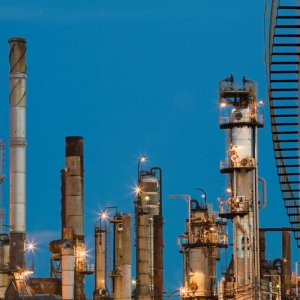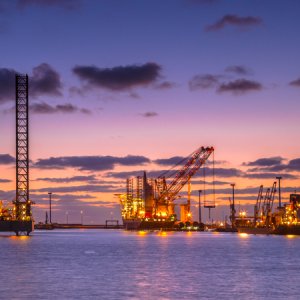CNH's Approach to Metering Production Value and Volume

STORY INLINE POST
Q: What are the priorities of CNH in terms of introducing metering systems for oil and gas production?
A: Our main focus is to give certainty to the Mexican government about the volume and value of gas, oil, and condensate production, as well as operation, transportation, distribution, and sales throughout the whole production chain. Our priority is measuring the quality and quantity of hydrocarbons produced in all fields operated by both PEMEX and the private sector. CNH has been attributed with system verification, compliance with international standards, and audits that will be run by third parties. Additionally, we will focus on the relationship between the process, equipment, and human resources related to these systems, given that they need to be well coordinated. We are going to analyze the cost-benefit relation in the metering process according to these factors, and we are going to determine what kind of technology or equipment is optimal depending on the location, fluids, process, or type of contract. An important factor to consider in this situation is the difference between the evolution of the contracts and the guidelines. The contracts remain static for 25-30 years, whereas the guidelines can be updated every two or three years. There is a relationship between the uniformity of the contract and the dynamics of the guidelines, depending on how the technology, the process, and the human capital change over time. We are going to develop different documents like guidelines, reports, and technical references, both for internal and external reporting not only for CNH but also CRE, the Treasury, SENER, Mexican Petroleum Fund, and the industry. We are going to publish the production data at the well level on a monthly basis on our website, presenting the production volume and hydrocarbon quality of PEMEX and all new operators, as well as verifying the volume of production transported through pipelines to refineries and export points in coordination with CRE. Currently, a team of eight petrochemical, mechanical, electronic, and IT engineers is working on the development of the necessary metering system. However, we also need people specialized in accounting processes given that the fiscal values need to be analyzed in cooperation with The Mexican Petroleum Fund and the Treasury.
Q: Who is responsible for any potential hydrocarbon losses between the well and the refinery or export point?
A: Operators have the responsibility for the production process as well as the transportation of hydrocarbons to a refinery or export point, which can be done by operators or a third party. The responsibility to regulate the transportation, storage and possible losses in this process rests with CRE based on information provided by CNH. The operator is paid based on the volume of hydrocarbons that arrives to the refinery or export point. According to international standards, the maximum acceptable loss between the well and the distribution point is 0.5%. At the moment, we are analyzing with CRE and the Treasury what will happen if we record bigger losses throughout the process, given that they cannot happen by conventional means. We are going to analyze every step in the process, and if losses exceed 0.5%, we are going to determine what measures must be taken directly with the government. In the case of robbery, a response needs to be coordinated with the security departments of each local government. For example, Cantarell is producing large amounts of water and PEMEX neither had the proper technology to separate water from oil nor the right metering systems in order to measure the correct production volume. Now, we are trying to fix this problem with the new regulations, which means that a large investment in dehydration plants and proper metering systems will have to be made. Such devices and equipment are expensive and every operator, including PEMEX, will need to make substantial investments in devices and equipment as well as the training of people and the development of internal processes. Depending on the field, there is an acceptable amount of water permitted per barrel, which normally is a value below 1%. A higher water volume might create problems at the refinery or in the export process; the water content might be accepted but there is going to be a penalization in terms of product value. If we define a limit of 0.25% loss due to water, that leaves 0.25% for the remaining losses including salt, sulfur, and other different components that affect the volume and the quality of the barrel. But, if we know the production level and quality at the well, we can plan different strategies depending on the location of the reservoir.
Q: Will CNH or the operators own the metering systems?
A: The operators are going to own and operate the equipment, based on the specifications and the guidelines given by CNH. We have the responsibility to collect this information and verify its validity, so operators need to share the information from these devices as well as their daily activity reports. In very specific situations, it could be possible to install our own devices. By law, we have the responsibility to intervene only in very special cases where the operator cannot handle the data, which is to be established based on supervision by CNH and audits by a third party.
Q: What are the requirements that you are going to set in terms of automation?
A: Automation requirements only exist for specific locations such as transfer points or fiscal metering points, but this is not mandatory for operational metering. The important metering points are located before the production from various wells, fields, or operators gets mixed with hydrocarbons from other sources. This is essential to define the volume and quality before mixing different kinds of hydrocarbons in the pipeline network. In Chicontepec and fields in the South Region with low production volumes, the metering will take place at defined time intervals or when the production reaches the tanker. In other cases, it will be every day or every month, depending on the level of production.
Q: How many metering devices must be installed to implementing this system for PEMEX’s production?
A: At the field level, there were 267 main metering systems in 2014 while there were almost 300 systems for transportation and a number of other processes. These areas will be our initial focus in order to identify the level of uncertainty related to core activities. We will need to analyze the information from all these metering systems to determine if the current number is sufficient. In any case, the current systems will either need to be fixed, or updated with new software. Our priority is to analyze what happens across PEMEX’s network, and PEMEX is aware of the opportunities to improve its systems. In terms of resources, the required investment is minimum compared to investment in activities such as drilling, which means that the main challenge is related to human capital.
Q: Who will own the pipeline system between the wells and the refineries or export points in the long term?
A: Currently, the pipeline network is owned by PEMEX, which can offer transportation services to all new operators. However, there are opportunities for other transportation companies to construct new pipelines and offer their services to operators, including PEMEX. Also, there can be agreements between different operators to develop pipeline systems that directly connect their production to the sales point. Any company seeking to enter this business must consult its plans with CRE, which has the authority to grant permits and to calculate the tariffs for the operators of such pipelines. In terms of metering, all new operators will have to act in accordance with the regulations established by CNH.























